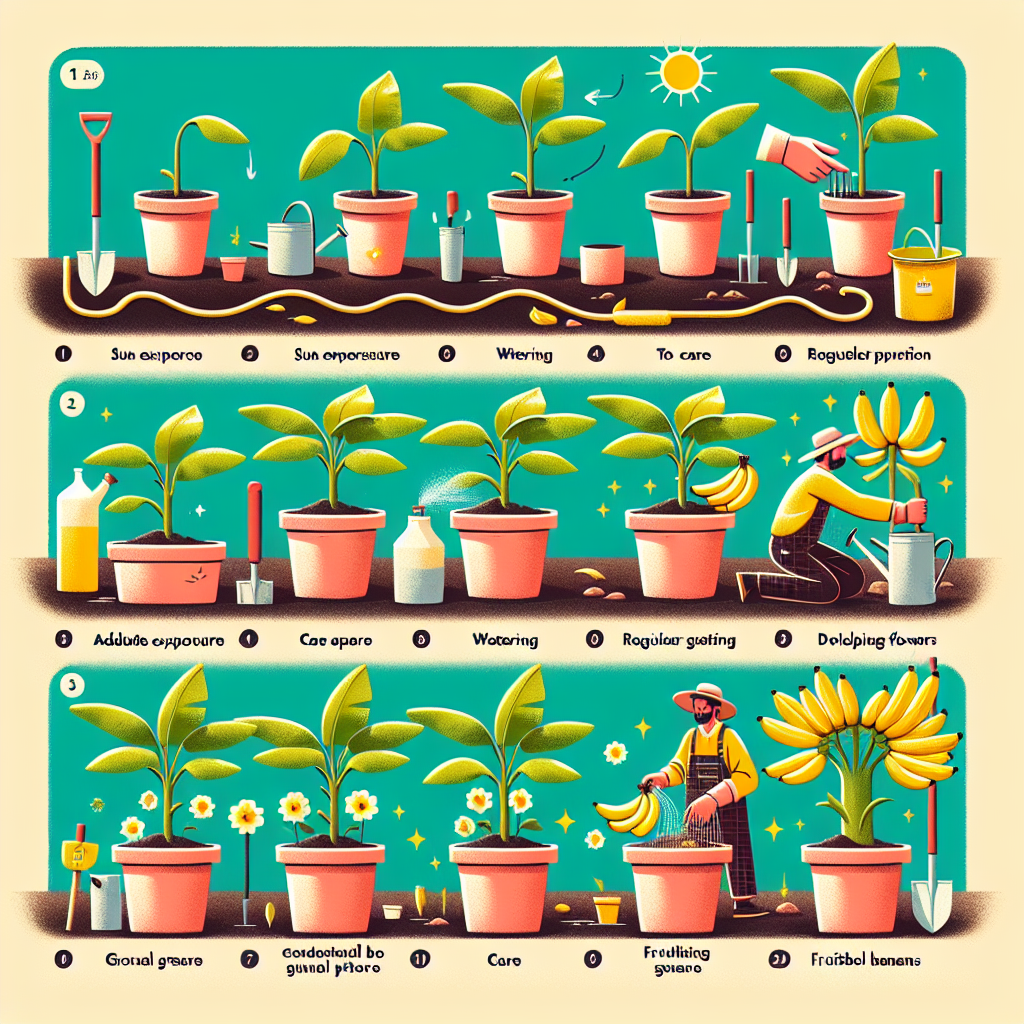Growing Your Own Banana Fruit at Home: A Guide to Success
Bananas are one of the most popular fruits in the world, known for their delicious taste and high nutritional value. While they are typically grown in tropical regions, it is possible to successfully grow your own banana fruit at home, no matter where you live. In this article, we will provide a comprehensive guide to help you successfully grow bananas in your own backyard.
Choosing the Right Variety
The first step in growing your own banana fruit is to choose the right variety. There are numerous banana cultivars available, each with its own unique characteristics. Some popular varieties for home gardeners include Cavendish, Lady Finger, and Dwarf Brazilian. These varieties are well-suited for growing in containers or small spaces.
Providing Optimal Growing Conditions
Bananas thrive in warm temperatures and high humidity levels. Ideally, they need a minimum temperature of 60°F (15°C) year-round and a relative humidity level of at least 50%. If you live in a region with cooler temperatures, consider growing bananas indoors or creating a microclimate by using plastic covers or greenhouses.
Selecting an Appropriate Location
When choosing a location for your banana plants, look for an area that receives full sun exposure for at least six hours per day. The soil should be well-draining and rich in organic matter. Bananas prefer slightly acidic soil with a pH level between 5.5 and 7.
Preparing the Soil
Before planting your banana plants, it is essential to prepare the soil properly. Start by removing any weeds or grass from the area where you plan to plant them. Next, loosen the soil using a garden fork or tiller, incorporating organic matter such as compost or well-rotted manure to improve fertility and drainage.
Planting Your Banana Trees
Once the soil is prepared, it’s time to plant your banana trees. Dig a hole that is twice as wide and deep as the root ball of your banana plant. Place the plant in the hole, making sure that the crown (the area where the leaves emerge) is level with or slightly above the soil surface. Gently backfill the hole, firming the soil around the base of the plant to ensure good root-to-soil contact.

Watering and Fertilizing
Bananas have high water requirements and benefit from regular watering. However, it’s important to avoid overwatering, as excessive moisture can lead to root rot. A general rule of thumb is to keep the soil consistently moist but not waterlogged. During dry spells, provide deep waterings to ensure proper hydration.
In terms of fertilization, bananas are heavy feeders. Apply a balanced fertilizer with equal parts nitrogen (N), phosphorus (P), and potassium (K) every month during the growing season. Additionally, supplementing with organic matter such as compost or aged manure can enhance soil fertility and promote healthy growth.
Pruning and Maintenance
As your banana plants grow, it’s important to perform regular maintenance tasks such as pruning and removing dead leaves. Pruning helps manage their size and shape while ensuring optimal fruit production. Cut off any excess suckers (shoots emerging from the base) to maintain a single main stem for better fruit development.
Protecting From Pests and Diseases
Bananas are susceptible to various pests and diseases, including aphids, mites, nematodes, and fungal infections. Regularly inspect your plants for signs of infestation or disease symptoms such as yellowing leaves or wilting. Take preventive measures like applying organic insecticides or fungicides when necessary.
Harvesting Your Bananas
Depending on the variety you choose, it usually takes 9-12 months for bananas to mature after planting. The fruit is ready to harvest when it turns yellow but still has a slight green tinge. To harvest, cut the entire bunch with a sharp knife, leaving a short section of stem attached. Hang the bunch in a cool, dry place and allow them to ripen naturally.
In conclusion, growing your own banana fruit at home can be a rewarding and enjoyable experience. By selecting the right variety, providing optimal growing conditions, and following proper care and maintenance practices, you can successfully produce delicious bananas in your own backyard. So why not give it a try and enjoy the taste of homegrown bananas straight from your garden?














